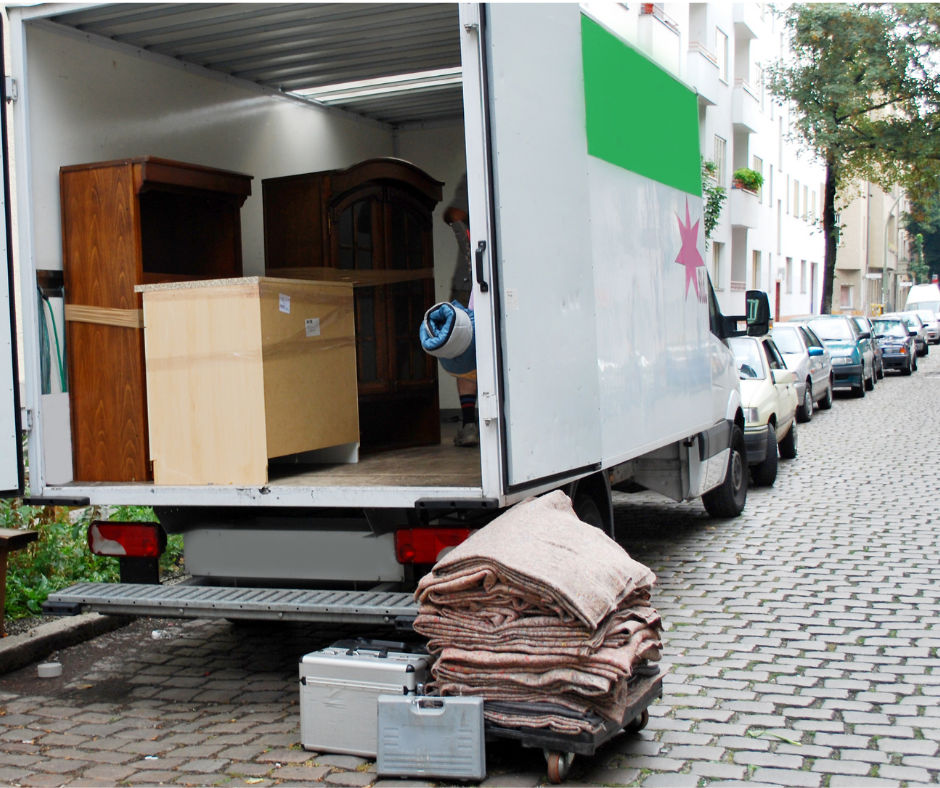How to Prepare For a Long-Distance Move
Preparing for an upcoming move?
You're one of 40 million Americans each year who move to a new state. And whether you're moving for a new job opportunity or to be closer to family, moving can be both one of the most exciting and most draining transitions in your life.
Moving may be especially difficult when you're relocating across the country to a completely unknown area. Luckily, your long-distance move can be made much easier with the proper knowledge and planning.
We've put together the following guide that explains all of the considerations you should be aware of before you begin the moving process.
Do Your Research
For most Americans, moving is the most stressful part of life. This is especially true when you’re moving across the country.
Choosing the right moving company will make the process much more enjoyable. Make an effort to research different companies to find both cheap long-distance moving companies and ones that will meet your needs.
You have a few different options for transporting your stuff long-distance.
Rental Truck
The cheapest and most flexible option involves renting a truck. However, this option requires a significant investment of your time and effort.
After packing up all of your belongings, you’ll need to go pick up the truck. Then you’ll need to load them into the truck. After that, you’ll drive to your new place, unload the truck, and return it. Only then can you start to unpack.
It's also important to note that are limited customer service options, so you’ll likely be on your own if something goes wrong.
Long-Distance Moving Companies with a Truck
If you don’t want to figure out the details of renting a truck or you don’t want to drive it, you can look for a long-distance moving service.
Once you load up your belongings, the truck driver will take your stuff to your new place. You’ll still be responsible for unloading your things, but you'll have a lighter load on your shoulders.
Consider that this option will become more expensive the more belongings you have. While it is more expensive than a DIY move, it will make the process much more comfortable for you.
Full-Service Moving Company
Save time by using a full-service moving company. The State to State Move website allows you to compare quotes from various moving professionals to give you the most competitive rates.
Full-service moving companies may be more expensive than other options. However, you'll be surprised at all of the cheap moving companies out there who will still provide great service.
Do keep in mind, though, that this option will require the most planning in advance, which is why it is important to research availability long before your move.
Create a Packing Schedule
Make your move easier by planning out when you're going to begin packing and which items you'll start with.
How Long Will It Take To Pack for Your Move?
Every move is different, but here's a general estimate.
- 1BR apartment: 1 day
- 2BR apartment: 1-2 days
- 3BR apartment: 2-3 days
- 4BR apartment: 3-4 days
- 2BR house: 2-4 days
- 3BR house: 3-5 days
- 4BR house: 4-6 days
- 5BR house: 5-7 days
These numbers are based on one person packing for eight to ten hours a day. If you pack more quickly or have extra help, it’ll be much easier.
When Should You Pack Your Belongings?
If you don’t want to pack all of your belongings over the course of just a few days, though, you can create a packing schedule.
This is a great option for people with young children or busy schedules who may not be able to take 4 days in a row for packing.
Before you start packing, take a broad inventory of what you have in your home.
Do you have two extra sets of dishware in storage? You can pack those in advance.
Things like out-of-season clothes, holiday items, and books can be packed long before your move so you’re not scrambling a few days before.
You’ll want to avoid packing certain items that are irreplaceable or high in value, including:
- credit cards and checkbooks
- bank statements
- expensive jewelry
- keys
- IDs including birth certificates, social security cards, and passports
Keep these items close by or on your person if possible. During a long-distance move, it’s better to have peace of mind knowing all of your important items are within arm’s reach.
Communicate
Moving doesn't just involve changing where you live. You're changing many important areas of your life, from your job to your healthcare provider.
Your move will affect most of the people you interact with every day, so it's wise to be as open with them about the process as possible.
Break the News to Family and Close Friends
Your children and closest friends should be the first people to know about your move. Nothing should be discussed online or with organizations like schools or doctors until the closest people in your life are aware of what's happening.
Expect some anger and even resistance in the beginning if you're moving with children. It is a hard transition for anyone and especially for them.
Make it clear that while the decision is final, you are there to discuss any concerns or questions. Be available as an emotional outlet, even though many of those emotions may be negative at first.
Close friends will likely take it better, but they'll also need time to process it. Be compassionate and respectful if they need space. Remind them that you're there for them and how much you care about them.
Let Employers Know
Whether you're moving to your new home with a job lined up or you're in the process of finding leads, it's wise to let your employer know in advance that you're planning to leave.
Your employer may be able to find you remote opportunities with the company or connect you to an office in your new area.
Should you choose to leave your company, it's best to end on good terms. You may never know when you'll connect again, and you may want to use them as a reference when looking for a new position.
Talk to Your Landlord
If you are renting your space, you should let your landlord know as soon as possible when you're planning to move out. It will give you both ample time to prepare the necessary paperwork and make any necessary repairs to your place before you leave.
Tenants are required to give their landlord at least 30 days or one rental period's notice before moving out. This time starts after the landlord receives the notice, not when you sent it.
Get Organized
One of the biggest contributions to stress during the moving process comes from keeping track of what seems to be a never-ending flurry of details.
Establish a few processes to get organized during the early stages of your move.
Use a Moving Checklist
The last thing you want to happen during your long-distance move is for you to realize that you’ve lost important documents or forgotten to make a necessary repair to your new place before you move in.
Stay on track during your moving process by creating a moving checklist or finding one online.
To get everything you need to be done at the right time, it’s best to break up your checklist into week-long increments. Each time frame will have a reasonable amount of tasks.
Make a Moving Binder
To keep your checklist in a secure place along with your other necessary documents, it's a great idea to make a moving binder.
Moving binders will include pertinent information to your move as well as other important documents.
- moving checklists
- receipts
- budgets
- utility bills
- moving company contact information like phone numbers
- contractor bids
- moving company paperwork
- school and medical records
- ID including birth certificates, social security cards, and passports
- floor plans
- design ideas
Your moving binder will be your one-stop reference tool for all information related to your move.
Label Boxes
While the best state-to-state movers will handle all of your items with care, they won't be able to provide the best service unless they have at least some understanding of what's in each box.
Color-code boxes to signal their corresponding rooms, and movers will be able to deliver each box to the appropriate location.
For instance, you can use blue tape to assign boxes to the kitchen and yellow tape to assign ones to your living room.
Go one step further and label each box with what they contain. The more specific, the better. This will allow movers to group boxes together based on what’s inside each one.
It will also help you to keep track of your belongings after your long-distance move.
You could label a box with your desk supplies as “office materials,” but labeling it instead as “pens, pencils, and files” will tell you exactly what to expect.
You’ll be able to unpack the most important items first and open the rest of the boxes at your convenience.
Protect Your Items
The longer your move is, the higher the chance of damage occurring to your items. Uncontrollable factors like road and weather conditions may ruin your stuff if you don’t take proper precautions beforehand.
Take Photos of Valuable Items
Before you pack anything of value, it's best to take a few pictures of it for your record. You'll be able to provide proof of their original condition should anything happen.
If you want to be fully protected, it might be worth it to look into mover's insurance. However, if you implement the following few guidelines for your items, you won't have cause to worry.
Wrap Paired Belongings
Even in closed boxes, items will move around a lot on the road. Small items should be wrapped together, especially if they’re part of a set.
Items like pencils and pens should be tied with a rubber band. Small office supplies like clips and scissors should be secured with heavy-duty plastic wrap.
Though it’s unlikely that these items will be damaged, your life will be much easier if you don’t open your carefully packing moving box to find small items in a disorganized array.
Wrap Furniture
As one of the heaviest and most difficult things to move, there’s a large margin of error when it comes to moving your furniture.
A slip-up when carrying your dresser down the stairs could cause a huge scratch. A bump in the road may cause your sofa to get scared up in the back of the moving truck.
To protect your furniture from damage, wrap your large pieces in moving blankets. Even just one blanket wrapped around the most protruding areas of a piece will protect it from dents, chips, and scratches.
Wrap Your Dishware
Dishes and other glassware will be the most fragile items you’re transporting.
Never place any of your dishes into a box without sufficient cushioning. Use foam pouches as the first layer of protection. Then, use moving blankets between larger pieces to create a buffer between them.
Remember to use a moving blanket at the bottom of moving boxes for dishes. This extra layer will keep dishes secure should the box be jostled around.
Invest in Additional Mover's Insurance
If you're still nervous about your items making it through a long-distance move, look into mover's insurance.
Federal law requires interstate movers to offer two types of mover's insurance: released value and full protection value. Released value is offered to everyone at no additional cost, which means that it provides little compensation.
According to the FMCSA, the mover would only have liability for 60 cents per pound per item with released value insurance. This means that if a 10-pound stereo valued at $1000 were damaged during the move, you'd only receive $6.00.
Full value protection costs more but will make the mover liable for the replacement value of lost or damaged goods in entire shipments. If something were to happen to your belongings during the move, the mover would have to repair the items, replace them, or agree with you on a cash settlement.
Factor in Extra Time
There’s no one-size-fits-all time frame for moving. However, by factoring in extra times for contingencies, you can prepare for any delays to the moving process.
How Are You Getting There?
Depending on where you're moving, you may choose to either drive to your new home alongside the moving truck or fly there and have the moving truck meet you.
If you're choosing to fly there, you'll only need a few hours to get from your old home to your new one. You'll have to consider how you are moving your cars, though.
Choosing to drive will save you the trouble of figuring out how to ship your car across the country, but it will add a few hours or days to your travel time.
In this situation, it's better to add in a few extra hours of travel time each day should something unexpected happen. You may also want to take it slow and enjoy the sights with your family instead of rushing from one place to the next.
What Items Are You Moving?
The types of items you’re moving as well as their size will affect how long it takes movers to load the truck, unload it, and transport items from the truck to your home.
A truck full of clothes in boxes that are all the same size will be much easier to move. The loading process will be simple since movers won’t have to think too hard about which items should be placed where in the truck.
Boxes of clothes are significantly less heavy than other items like books and furniture.
If your moving truck is full of custom-made furniture and fragile decor items, expect the moving process to take longer.
Out-of-state moving companies understand the importance of storing your items in the truck properly to avoid damage from transport. They may have to rearrange the truck a few times before they get on the road.
Make Your Place Move-in Ready
After you’ve undergone the taxing process of packing all of your belongings and moving states, you’ll be more than ready to relax in your new home.
Make sure that your new place is move-in ready before you begin traveling. It won’t be pleasant to deal with contractors and repairmen while you’re already juggling so many other details.
Set Up Utilities
Set up your utilities a few weeks before you move so that you have one less thing on your mind after you arrive. It's wise to begin researching different cable and internet companies at least two weeks before your scheduled move-in date.
Once you've found the one you like, go ahead and schedule an installation appointment. Those few extra weeks will give you a buffer should appointments need to be booked in advance or if something were to go wrong.
Update Your Address
From car registration to your subscriptions and bills, some of the most important documents in your life are sent to you by mail.
After you move in, you'll likely be so busy settling in and unpacking that you may not notice when a bill doesn't arrive or an important letter hasn't been delivered yet. All mail may still be delivered to your old place.
You can easily update your address online, even setting a specific date for the address change to be valid. Do this at least a week before your move-in date.
You'll also have to update your address on driver's licenses, voting forms, and car registration.
Schedule a Cleaning
Before the last of your moving boxes were loaded onto the moving truck, how much time did you spend cleaning your home for the next owner? We're guessing that with everything on your plate, you didn't prioritize cleaning every nook and cranny of your old place.
Chances are, the previous owners of your new place didn't either. If it's been a few weeks or months since the space has been occupied, there's probably a layer of dust that needs to be taken care of.
Schedule cleaning services to make your new place a blank canvas that is ready for your arrival.
Look Into the Local Area
Before you move, you likely have most of the bigger details sorted out, like job leads, your children's new school, and your primary care provider.
You may not have given much thought, though, to some of your day-to-day lifestyle choices.
Your new place may be near a different grocery store you were used to. Maybe people in your new neighborhood use their bikes to get around more often than their cars.
Spending a few days in your new area before you move will give you a great lay of the land before you officially settle in. But if you can't make it out there, using digital options like Google Maps and Yelp will give you a feel for what life will be like in your new area.
Prepare for Your Long-Distance Move
Your long-distance move will undoubtedly be full of last-minute details and unexpected changes. However, with the right preparation, you'll be ready to handle whatever life throws your way.
A great plan along with a great moving team will keep the transition a positive and efficient one.
To get recommendations from professional, nationwide, and state-to-state movers, fill out the short form on our homepage or call us to learn more.
Get ready to move with a free quote! Just fill out the form and we'll get back to you with the next steps.






